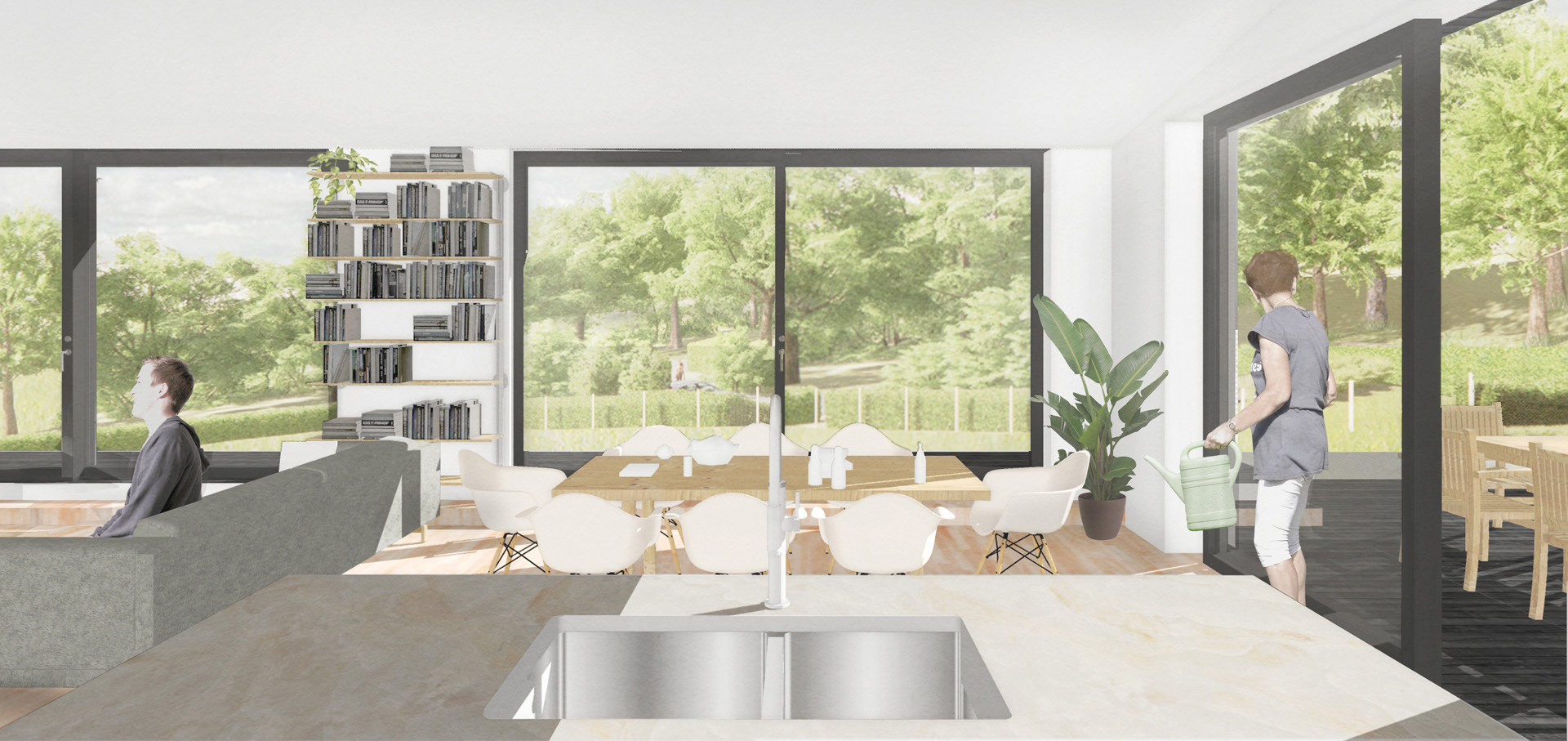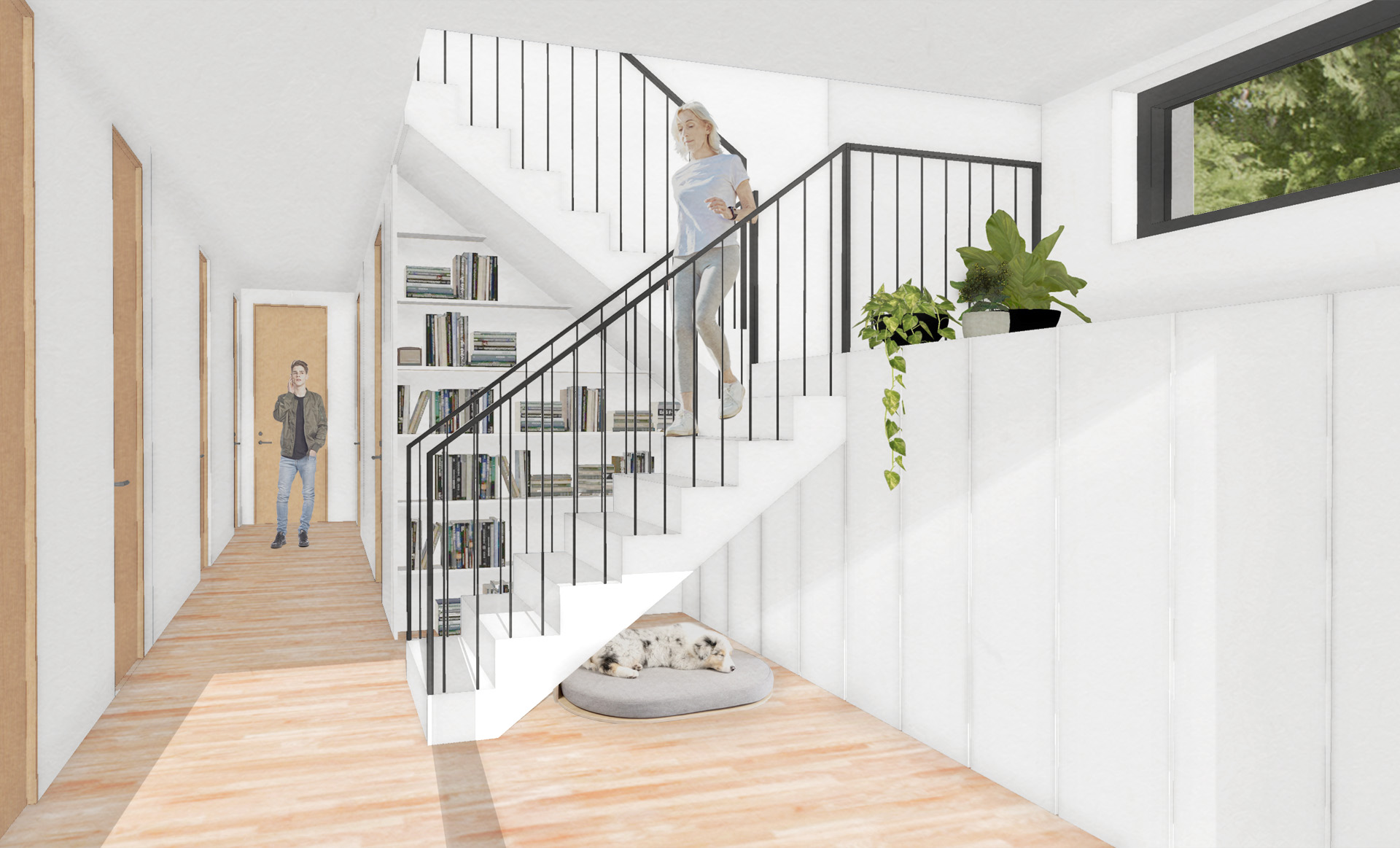Passive House Plus, Kent
Comfortable, resilient, certified ‘Passive House Plus’ home designed so that, using a particular energy tariff, its occupants may have no energy bills over 12 months.
A comfortable, healthy, resilient family home designed to run on 100% renewable energy sourced from on site and from the grid with the ability to end up with no operational energy costs over 12 months. As such, this house meets the ecological imperatives of our time.
This house was made with low embodied energy using a UK-manufactured frame made from Swedish engineered timber beams filled with cellulose insulation; free from toxic chemicals. Fire safety is even stronger than statutory requirements, with dense, fire-proof wall linings and a sprinkler system throughout – as in all our houses.
The house contains the same operating system as Brambles, except that it runs on three-phase power, with a three-phase battery. This enhances the potential to export energy to the national grid where the local provider capped the peak export allowance, and thereby enhances utilisation of on-site renewable energy. This also makes the house ready for a future speed-of-export tariff that may provide higher prices for energy exported at high speed on all three phases simultaneously.
The house is carved into its site to meet a planning requirement to minimise its visual impact in the landscape. The cost of this requirement is greatly reduced, compared to Lark Rise, because the retaining wall is a garden wall rather than integrated into the construction.
The house uses external venetian blinds to control solar gains and also has the ability to provide some active cooling through the ventilation system, which is likely to be powered entirely by solar energy. An 18 cubic metre underground rainwater storage tank adds further to the resilience of the house.
A reversible electric heat pump is used mainly to heat water for bathing and kitchen use. The 100% fresh air ventilation system is integral to the heat pump, discretely and efficiently delivering supplementary heating or cooling, while constantly cleansing the indoor air of viruses and any other contaminants. Space heating and cooling use so little energy that they are likely to be only a secondary requirement to domestic water consumption.
This house demonstrates how we can build today to meet the ecological imperatives of our time. It will protect against a changing climate and will last several times longer than a power station. As such it will be a gift to future generations, not a liability.

